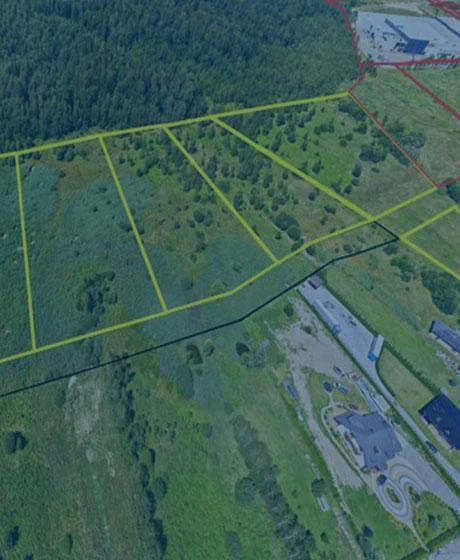What impacts the price of land? How does a more expensive plot translate into lower development costs?
11 july 2023

Contents
Land prices have risen in recent years – this growth has been most pronounced for development plots, fuelled by robust demand and a growing shortage of ready-to-develop land.
There are, however, multiple factors to consider when choosing a development plot that can ultimately lower the costs of an industrial project. Let us find out what impacts the price of land and how to buy a plot… without spending a fortune on getting it ready for development.
What impacts the value of land - zoning conditions
One of the key factors impacting the price of land is its intended use specified in a zoning plan. Greenfield plots zoned for manufacturing, warehousing and services of all kinds tend to be more expensive than seemingly comparable agricultural plots with no zoning. Key aspects resulting from a zoning plan include site development parameters and ratios that determine the cubic volume of a building that can be constructed on a given plot.
It is always worth seeking specialist advice to determine if a planned project can actually be developed on a given site, especially in the case of manufacturing or other projects requiring an environmental impact assessment.
The purchase of a plot that does not have a valid zoning plan will require obtaining a zoning decision with an associated risk of a building permit being denied.
The location and neighbourhood of a plot
Plots on the outskirts of large cities (Poland’s core industrial markets) are the most attractive for manufacturing, warehousing and logistics projects. Proximity to large urban areas means easy access to both consumer markets and labour. Location decisions are being increasingly driven by availability of workers and - in the case of high-tech industry - access to a high-skilled workforce. In addition, land for business use should be located close to well-developed road infrastructure to facilitate transport. Investors are frequently required to share in the costs of building access roads or remodelling existing infrastructure if they choose to invest in plots with no access to paved roads. Not only will this generate additional costs, but will also often take time and dialogue with local governments.
Development sites zoned for manufacturing and service use frequently allow for business activity that may cause a nuisance associated with excessive noise or heavy lorry traffic. As a result, they should be located in appropriate settings and away from people’s homes to prevent conflicts and haphazard development.
The legal status and technical conditions
The legal status of a property is critical to success. If it is unclear, a number of issues are likely to arise in the future. The key document that must be delivered by the seller is an excerpt from a land and mortgage register.
Property due diligence must also be carried out to identify all risks that could potentially protract or significantly complicate the investment process. Factors to consider before buying a plot include its bearing capacity and groundwater level, and the risk of it being in a floodplain. Another document that must always be examined is an excerpt from a land and building register – a fee for a farmland or forestland conversion may be required. All these factors are likely to be barriers to project development and to add to overall costs.
Utilities
What else determines the price of land? As a matter of fact, access to utilities will also be critical. If there is no such access, you will have to brace yourself not only for extra costs but also frequently for a very long wait for a connection to be built. As a result, your project will take significantly longer to complete.
A site investigation will also be necessary to locate buried utilities such as pipes in order to delineate restricted use zones. In practice, this is likely to significantly limit the possibility of constructing a building on a plot of land.
A more expensive plot means lower costs
The price of land paid by an investor to the seller is not the only cost of buying a plot. When you buy a property, you will incur administrative costs and a number of expenses for services necessary to begin your project and, above all, to obtain a building permit.
All things considered, a more expensive plot is most often likely to turn out to be much cheaper in getting it ready for development – the asking price should not be the decisive factor. It is therefore advisable to get in touch with an advisor who has relevant market insight to help you avoid pitfalls and who will propose properties that will meet your investment requirements, subsequently reducing risks related to buying a development plot.
Read also: How to prepare for a change of warehouse location


